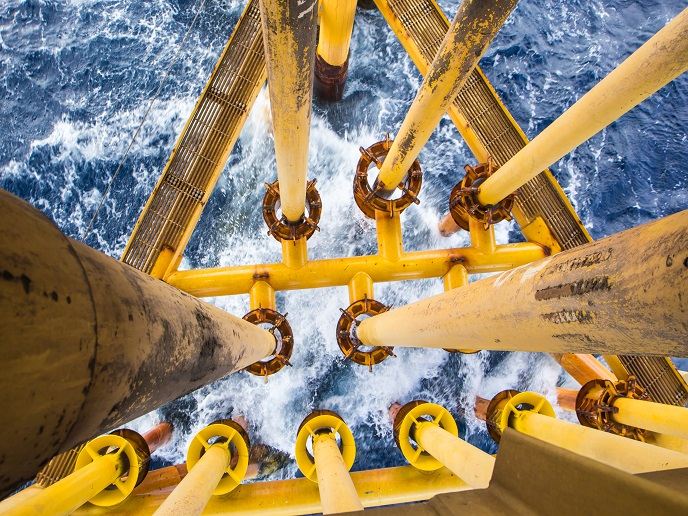Big Data replaces eyes for high-resolution corrosion assessment of oil rig structures
Offshore oil wells are large, complex structures requiring significant investment. As operators work to extend the lifetime of their rigs, advanced non-destructive health monitoring of critical parts is essential. The conductor, the outermost casing providing structural support and protection to the hole that forms the well, is one of those parts. Currently, technicians wearing a harness and suspended by a rope inspect conductors visually, but only above the waterline. The EU-funded ASPIRE project has automated that process with high-tech, data analysis software able to assimilate different types of non-destructive inspection (NDI). It promises to reduce the probability and consequences of failure, enhancing the competitiveness of the oil and gas industry.
Where sea meets air
Structures in the splash zone are under attack from both the air and the sea. As Konrad Reber, Head of R&D at coordinating company Innospection Germany, explains: “Traditionally, a technician spot checks the wall thickness of a conductor at points above the waterline. Data is insufficient to yield a meaningful assessment. In addition, most defects are located at the air-water interface or below water, areas that cannot be reached by rope-access technicians and that are dangerous for divers due to waves.” ASPIRE takes advantage of advanced NDI technologies such as magnetic eddy current and ultrasonic corrosion mapping, which can be implemented via remote control at the waterline and below it. The project’s decision support software assimilates data using open data formats. Payam Jamshidi, Team Manager of Asset Integrity Management at project partner TWI explains: “The ASPIRETM software package generates wall thickness risk data combining inputs from the various NDI techniques, making it possible to create a more complete and accurate picture of the asset’s condition. This is used to calculate the probability of failure.” Sebastian Hartmann, Sales and Business Development Manager of Innospection, adds: “ASPIRETM produces an assessment report and key indicator graphs regarding asset condition and remaining lifetime with the click of a button. The software can also rank several conductors by risk, enabling operators to prioritise repairs and optimise service and maintenance scheduling.” The inspection data can be archived and compared to future results.
Riding the wave and expanding reach
So far, ASPIRE has analysed the results from 86 conductor splash zone inspections to determine the typical profile of corrosion defects. In addition, as Reber explains, “the ASPIRETM software package was tested by loading existing inspection data and comparing assessment results to manual assessments for a number of cases. Outcomes confirm that accurate asset integrity assessment and management can only be made based on automated inspection results.” ASPIRETM is now being used by client organisations to make informed decisions about well conductor maintenance and repair. In the future, the team envisions application to other structures in the splash zone. Jamshidi summarises: “The new ASPIRE™ software package automates the inspection process, allowing easy upload of high-resolution data received from advanced and proven inspection techniques to provide an accurate integrity assessment of splash zone structures, thus filling a gap in the oil and gas industry.”
Keywords
ASPIRE, assessment, software, splash zone, corrosion, oil, NDI, water, automated, oil rig, non-destructive inspection, data analysis, well conductor

